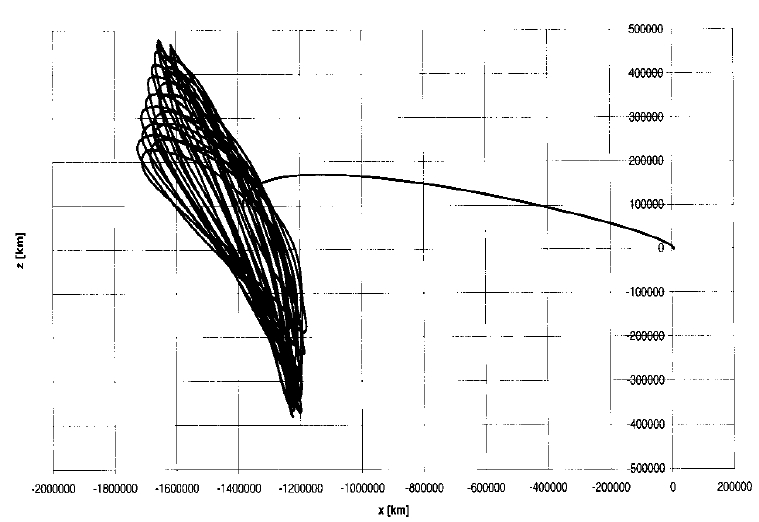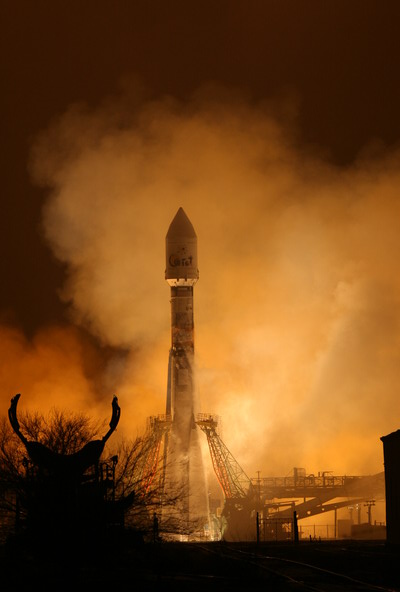Orbit
One of PLATO's top level requirements is the possibility of conducting very long observations in a stable environment, with as few interruptions as possible. This requirement naturally rules out low-Earth orbits, for which there are strict limitations in terms of "continuous viewing zone" (see CoRoT or MOST mission scenarios). Also, low-Earth orbits suffer from high radiation levels as well as from very high scattered light contamination for the telescope from the sunlit Earth. Finally, ground-station contacts are short. These three issues are well-known major limitations of the CoRoT satellite, located on such a low-Earth orbit. Geostationary orbits or highly eccentric orbits with a high perigee, have better characteristics, but are very costly, and may still suffer from high levels of scattered light contamination as well as from eclipse seasons.
We are led to choose a large Lissajous orbit around the L2 point, as illustrated below.


Large Lissajous orbit around L2, as seen from the ecliptic plane.
The Earth is at (0,0) coordinates, and the Sun is to the right.
A large Lissajous features a limited cost of transfer from the Earth and is not affected by too many Earth-Sun or Moon-Sun eclipses. Besides, in the specific case of a reasonable satellite-to-ground telemetry rate (200 kb/s) as proposed for PLATO, one can easily manage the antenna lobe geometry with respect to the half-year parallax on the radio frequency line of sight (steering function). Another advantage of a L2 orbit is to reduce dramatically the sources of noise related to the interaction between the spacecraft and its environment.
Radiation impacts at L2 will affect in a limited way the photometric performances of PLATO. This problem is well known for missions in low-earth orbits, such as CoRoT, which suffer repeated passages in the South Atlantic Anomaly, but still succeed in providing ultra-high precision photometry. The radiation environment on a large Lissajous orbit around L2 will be less hostile, and dominated by solar eruptions. Since the first Cosmic Vision M-class mission will be flown around solar minimum, the effect of radiation impacts should remain limited, and in any case much lower than that of CoRoT. We also expect a lower impact of radiations on the mission performances than e.g. for Gaia, because PLATO will work at much higher photo-electron flux, thus minimizing the effect of electron traps produced by radiation impacts.
Launcher
The current assumption is to launch PLATO with a Soyuz/Fregat from Kourou. This is the same rocket that launched CoRoT in December 2006 (see image below). This launcher, available at a reasonable price, is extremely reliable, and its performance is well matched to PLATO's requirements. The mission strategy foresees that the Soyuz rocket will inject the PLATO/Fregat assembly in a low parking orbit, from which a firing of the Fregat upper stage will inject the PLATO spacecraft into an escape track toward the final L2 orbit.
